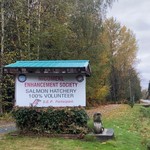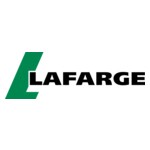VANCOUVER, British Columbia–(BUSINESS WIRE)–Lafarge Canada announced today a 5-year in-kind donation commitment, with a market value of $100,000, with the Nicomekl Enhancement Society (NES) in Langley, British Columbia. From 2023 to 2028, Lafarge will annually provide $20,000 in aggregates, concrete, and labour to enhance the sustainability of the wild Pacific salmon population and ecosystem within the coastal area of the Nicomekl River (BC).
“As Canada’s largest provider of sustainable and innovative building solutions, our goal is to not only provide our customers and partners with a world-class green portfolio, but also to positively impact the ecosystems surrounding our business operations,” comments Lincoln Kyne, Vice President and General Manager, Lafarge Canada, British Columbia and the U.S. Pacific Northwest. “This key initiative led by NES is a great example, as we will be able to provide the required green construction materials and labour to stabilize, re-shore, and line critical spawning beds for returning salmon until 2028.”
This initiative is part of Lafarge Canada’s 2030 People Roadmap and Human Rights Directive in the West, which together consist of the continued engagement of local communities in sustainable and social impact initiatives, including the Indigenous Peoples Community.
“This 5-year partnership with Lafarge Canada inaugurates an exciting journey for our organization – it will allow us to continue to best support habitat restoration and our hatchery operations,” says Nigel Easton, President of NES. “Salmon are a critical species to reassure healthy ecosystems in BC and they also carry a significant cultural value for local stakeholders and rights holders. In fact, hatcheries serve a vital role in conserving vulnerable salmon stocks and providing high-quality habitat for the fish to lay their eggs and incubate.”
Pacific salmon abundance along the West Coast of Canada has sharply declined since the early 1990s; hatchery operations allow volunteers to maintain populations, improve habitat, and educate the public. This initiative will benefit approximately 3 million individuals who inhabit the Great Vancouver Regional District and Fraser Valley areas of British Columbia.
Quick facts
- Lafarge Canada announced today a 5-year in-kind donation commitment, with a market value of $100,000, with the Nicomekl Enhancement Society (NES) in Langley, British Columbia.
- From 2023 to 2028, Lafarge will annually provide $20,000 in aggregates, concrete, and labour over the next five years to enhance the sustainability of the wild Pacific salmon population and ecosystem within the coastal area of the Nicomekl River (BC).
- This initiative is part of both Lafarge Canada’s 2030 People Roadmap and Human Rights Directive in the West, which together consist of the continued sustainable and social engagement of local communities, including the Indigenous Community.
- Pacific salmon abundance along the West Coast of Canada has sharply declined since the early 1990s; hatchery operations allow volunteers to maintain populations, improve habitat and educate the public.
- This initiative will benefit approximately 3 million individuals who inhabit the Great Vancouver Regional District and Fraser Valley areas of British Columbia.
Associated links
About Lafarge Canada
Lafarge is Canada’s largest provider of sustainable and innovative building solutions including Aggregates, Cement, Ready Mix and Precast Concrete, Asphalt and Paving, and Road and Civil Construction. With over 6,900 employees and 400 sites across the country, we provide green products to build the infrastructure and communities where Canadians live and work.
As a member of Holcim Group, our purpose is to build progress for people and the planet.
About Nicomekl Enhancement Society (NES)
The NES is a 100% volunteer organization located in the Township of Langley that was formed in 1989 by dedicated fishermen interested in trying to preserve the diminishing salmon population. The hatchery annually captures and releases three types of Pacific salmon – Chinook, Chum & Coho the annual release amount is in the 250,000 range.
The hatchery is also involved in a DFO program called Salmonid in the Classroom where the hatchery gives 50 Coho eggs to approximately 20 schools, who then raise them in their classroom and in April bring them back to the hatchery for release, along with a tour of the hatchery. In April, NES holds an Open House and invites the public to come help release all the remaining fry back into the Nicomekl.
Find a 13-minute video on www.nicomeklsalmonhatchery.com showing how NES catches, incubates, feeds and releases salmon.
Contacts
Anna Salomao
Communications Manager, Eastern Canada
anna.salomao@lafarge.com






